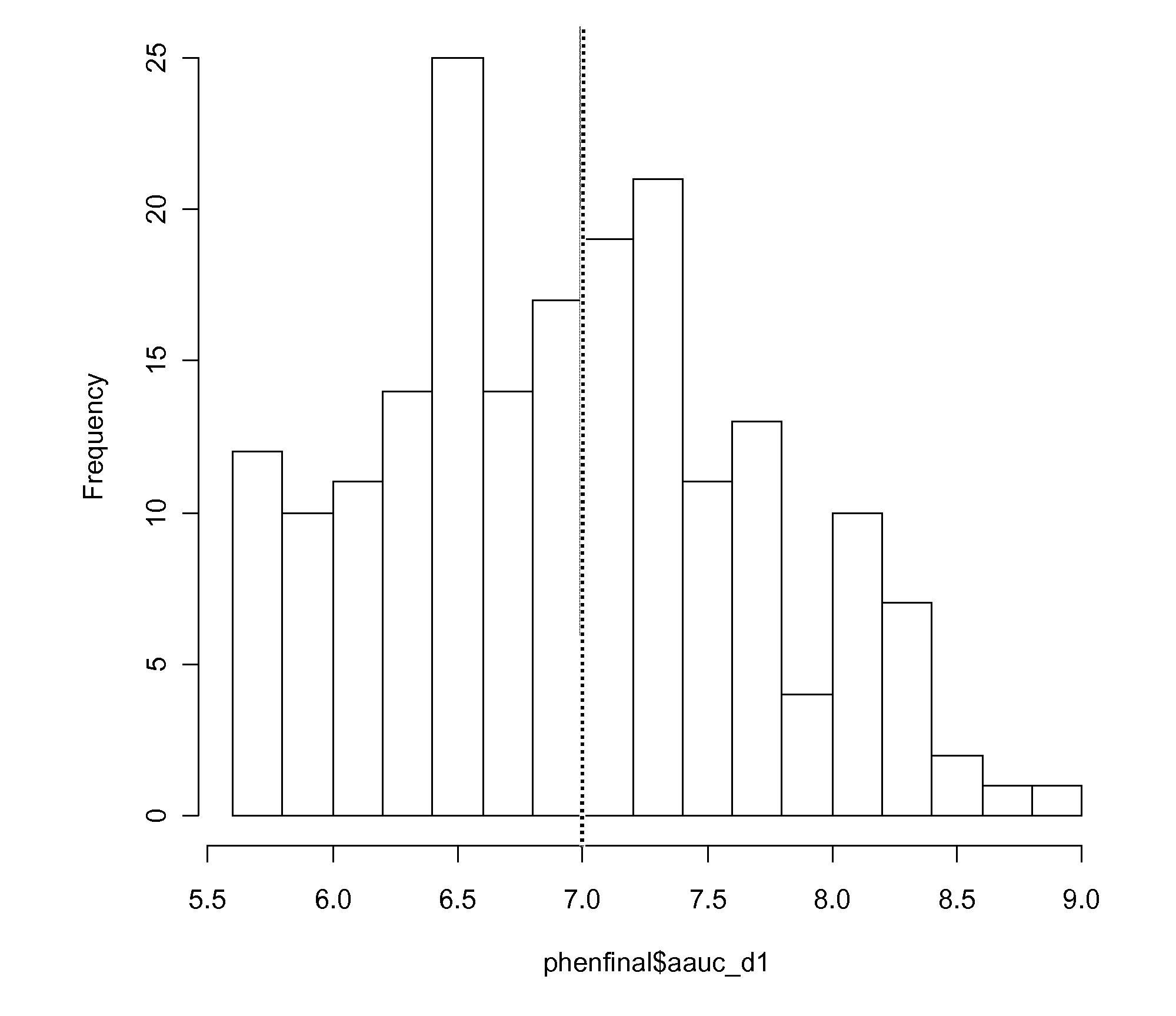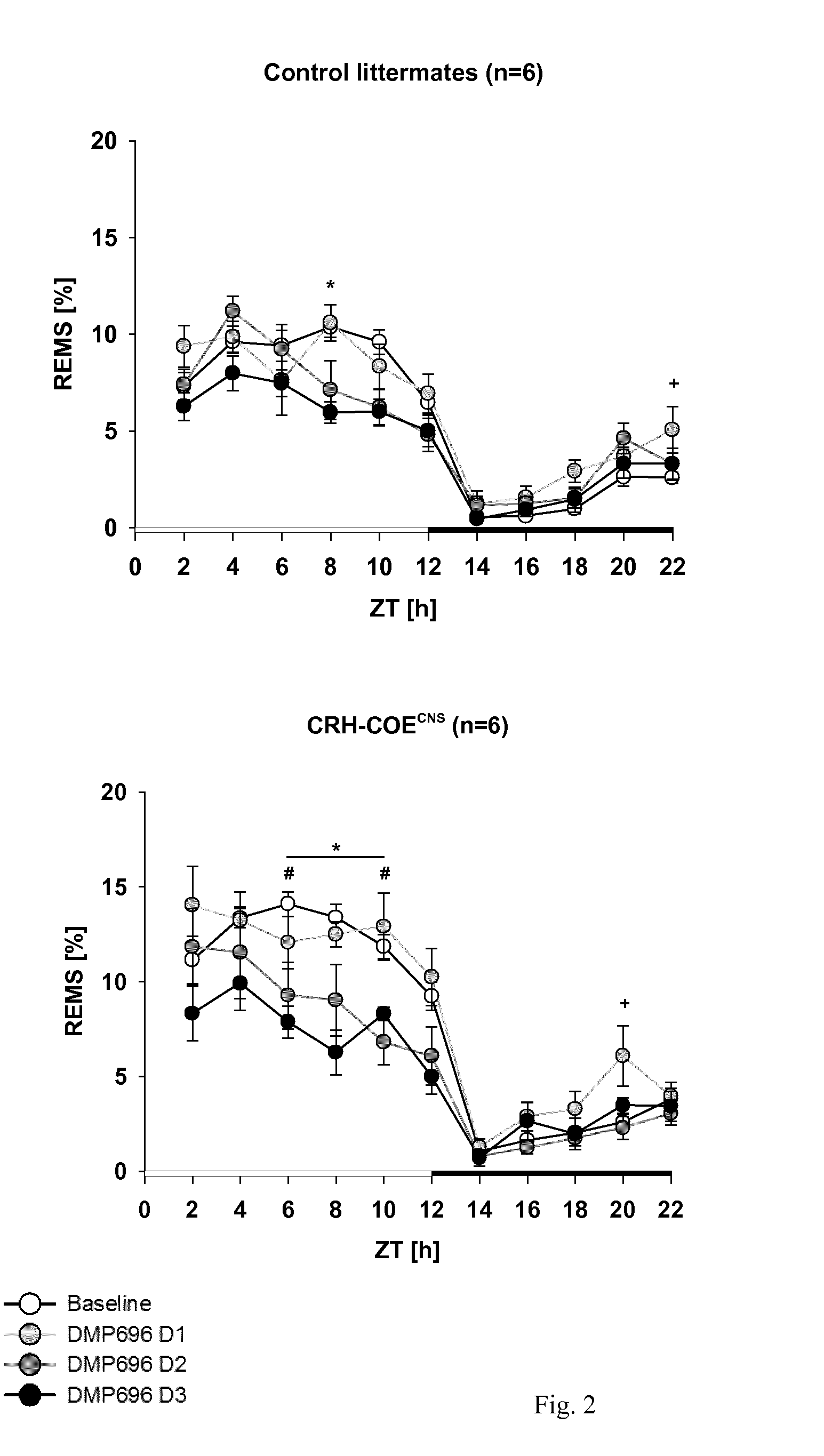Genetic predictors of response to treatment with crhr1 antagonists
a technology of gene predictors and antagonists, applied in the field of gene predictors of response to treatment with crhr1 antagonists, can solve the problems of inability to demonstrate the superiority of crhr1 antagonists in randomized clinical trials, little success, and uncertainty whether crhr1 antagonists are indeed suitabl
- Summary
- Abstract
- Description
- Claims
- Application Information
AI Technical Summary
Benefits of technology
Problems solved by technology
Method used
Image
Examples
example 1
Methods
[0512]Patients:
[0513]Patients with unipolar or bipolar depression admitted as in-patients to the Max Planck Institute of Psychiatry (MPI), Munich, Germany, for treatment of a depressive episode were included in the study. Patients were diagnosed by psychiatrists according to the Diagnostic and Statistical Manual of Mental Disorders (DSM) IV criteria. Patients with bipolar disorder or depressive disorder due to a general medical or neurological condition were excluded, as were patients with a lifetime diagnosis of drug abuse and depressive symptoms secondary to alcohol or substance abuse or dependency. Ethnicity was recorded using a self-report sheet for nationality, first language and ethnicity of the patient and of all four grandparents. All patients were Caucasian and part of the Munich-Antidepressant-Response-Signature (MARS) project (Hennings et al., J Psychiatr Res., 2009) (www.mars-depression.de). They were treated with antidepressant medications according to doctor's c...
example 2
[0541]Sleep disturbances, such as decreased slow-wave sleep, increased sleep fragmentation and rapid-eye-movement sleep (REMS) disinhibition, are cardinal symptoms of major depression in humans. This study aims to identify those patients where a central CRH hyperdrive plays a causal role and which would therefore respond favourably to a CRHR1 antagonist. To test the relationship between a central CRH-overexpression and REM-disinhibition in particular, transgenic mouse models where CRH is overexpressed as a result of genetic engineering were employed.
[0542]Many animal models of depression share increases in REM-sleeps (REMS) as a common feature. Therefore, increased REMS in animals should reflect REMS-disinhibitions in humans. Mice with CNS-specific CRH-overexpression strikingly share the characteristic increases in REMS. As such, an increase in REMS indicates a central hypersecretion of CRH and may serve as a biomarker to identify those patients who would benefit from treatment with...
PUM
| Property | Measurement | Unit |
|---|---|---|
| Fraction | aaaaa | aaaaa |
| Fraction | aaaaa | aaaaa |
| Linkage disequilibrium | aaaaa | aaaaa |
Abstract
Description
Claims
Application Information
 Login to View More
Login to View More - R&D
- Intellectual Property
- Life Sciences
- Materials
- Tech Scout
- Unparalleled Data Quality
- Higher Quality Content
- 60% Fewer Hallucinations
Browse by: Latest US Patents, China's latest patents, Technical Efficacy Thesaurus, Application Domain, Technology Topic, Popular Technical Reports.
© 2025 PatSnap. All rights reserved.Legal|Privacy policy|Modern Slavery Act Transparency Statement|Sitemap|About US| Contact US: help@patsnap.com



